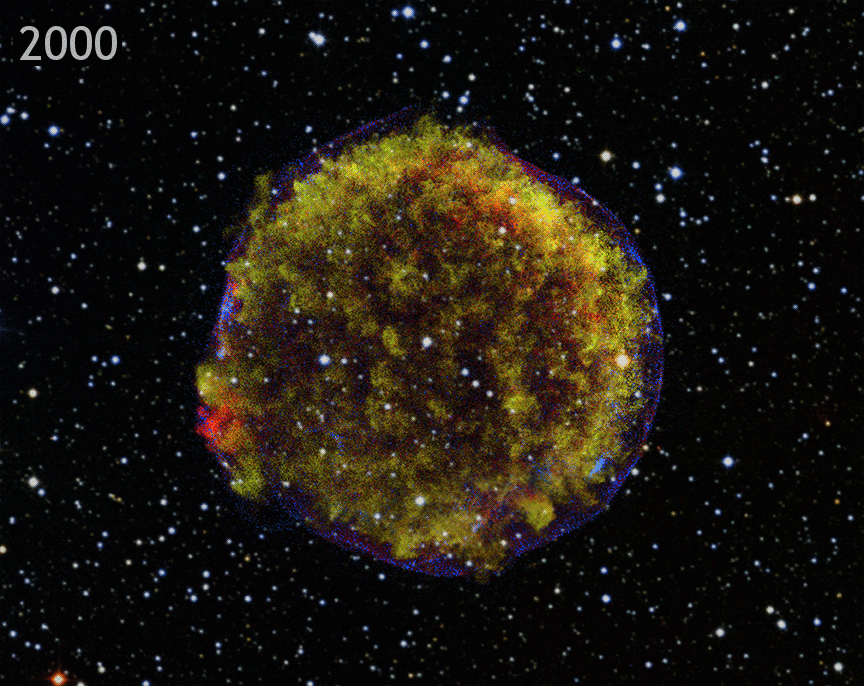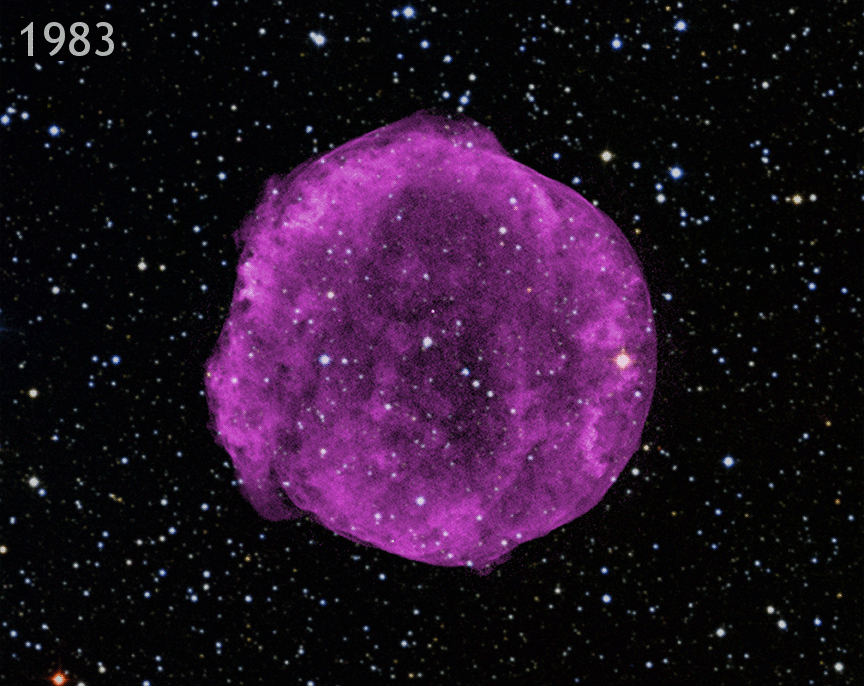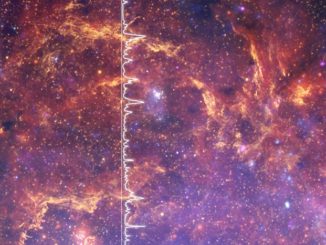
In modern times, astronomers have observed the debris field from this explosion — what is now known as Tycho’s supernova remnant — using data from NASA’s Chandra X-ray Observatory, the NSF’s Karl G. Jansky Very Large Array (VLA) and many other telescopes. Today, they know that the Tycho remnant was created by the explosion of a white dwarf star, making it part of the so-called Type Ia class of supernovae used to track the expansion of the universe.
Since much of the material being flung out from the shattered star has been heated by shock waves — similar to sonic booms from supersonic planes — passing through it, the remnant glows strongly in X-ray light. Astronomers have now used Chandra observations from 2000 through 2015 to create the longest movie of the Tycho remnant’s X-ray evolution over time, using five different images. This shows the expansion from the explosion is still continuing about 450 years later, as seen from Earth’s vantage point roughly 10,000 light years away.
By combining the X-ray data with some 30 years of observations in radio waves with the VLA, astronomers have also produced a movie, using three different images. Astronomers have used these X-ray and radio data to learn new things about this supernova and its remnant.
The researchers measured the speed of the blast wave at many different locations around the remnant. The large size of the remnant enables this motion to be measured with relatively high precision. Although the remnant is approximately circular, there are clear differences in the speed of the blast wave in different regions. The speed in the right and lower right directions is about twice as large as that in the left and the upper left directions. This difference was also seen in earlier observations.
Offsets such as this between the explosion centre and the geometric centre could exist in other supernova remnants. Understanding the location of the explosion centre for Type Ia supernovae is important because it narrows the search region for a surviving companion star. Any surviving companion star would help identify the trigger mechanism for the supernova, showing that the white dwarf pulled material from the companion star until it reached a critical mass and exploded. The lack of a companion star would favour the other main trigger mechanism, where two white dwarfs merge causing the critical mass to be exceeded, leaving no star behind.
The significant offset from the centre of the explosion to the remnant’s geometric centre is a relatively recent phenomenon. For the first few hundred years of the remnant, the explosion’s shock was so powerful that the density of gas it was running into did not affect its motion. The density discrepancy from the left side to the right has increased as the shock moved outwards, causing the offset in position between the explosion centre and the geometric centre to grow with time. So, if future X-ray astronomers, say 1,000 years from now, do the same observation, they should find a much larger offset.
A paper describing these results has been accepted for publication in The Astrophysical Journal Letters and is available online.



